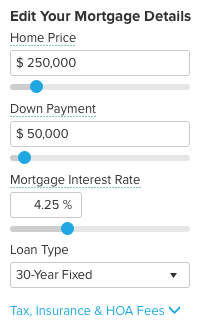The Ginnie Mae CUSIP aggregation program began in March 2019 and was finished https://midplains.newschannelnebraska.com/story/43143561/wesley-financial-group-responds-to-legitimacy-accusations in July 2019 and the Desk combined around 8,000 individual CUSIPs into about 8 aggregated ones. The aggregation procedure was designed to minimize administrative costs and operational intricacies associated with the Federal Reserve's firm MBS portfolio using a straightforward and rules-based approach that follows market.
working objectives and basic market practices. Other The New York Fed releases detailed data on all settled SOMA firm MBS holdings on its on a weekly basis. In addition, Fannie Mae, Freddie Mac, and Ginnie Mae offer details about aggregated CUSIPs, including the underlying firm MBS, on their public sites. Yes. Info about individual Fannie Mae, Freddie Mac, and Ginnie Mae agency MBS CUSIPs underlying the Federal Reserve's aggregated CUSIPs will stay readily available on these organizations' public sites.
's freshly imposed limitation on repooling of reperforming forborne loans yet once again penalizes servicers acting as essential service providers in the continuing efforts to safeguard mortgagors dealing with financial hardship due to COVID-19. Let me count some of the ways Ginnie Mae servicers are bearing the force of mortgagor forbearance under the CARES Act: no maintenance cost income during forbearance of as much as a year( and potentially longer must Congress decide its needed); no relief from advance requirements for the duration of such forbearance; no modification of the structural impediments to private funding to fund advances; and no repayment for the cost of funds for advances. In releasing APM-20-07 on June 29, 2020, Ginnie Mae chose to even more secure investors from the prospective improved prepayment risk resulting from early swimming pool buyouts of forborne loans. This defense, nevertheless, comes at the cost of servicers. By restricting servicers from depending on enduring, genuine organization activity early pool buyouts coupled with the repooling of reperforming loans Ginnie Mae has actually elected to deem a regular activity as inappropriate due to the fact that it is unnecessary and, gosh, may produce an earnings. This obligation lasts till the defaulted loan is bought out.
loan protected by the mortgaged property, the proceeds of which are utilized to bring the loan current. By utilizing a junior lien, the loan does not need to be customized. Presently, a servicer may achieve a" stand alone partial claim" or a" home loan healing advance" without buying the delinquent loan from the swimming pool, however servicers regularly combine the allowable early buyout of an overdue loan, a reinstatement through a" stand alone partial claim" or" home loan healing advance, "and a repooling of the reperforming loan into recently issued securities. Initially, the borrower under a reperforming loan need to have made prompt payments for the six months right away preceding the month in which the associated mortgage-backed securities are released.
Second, the issue date of the mortgage-backed securities must be at least 210 days from the last date the loan was delinquent." Reperforming Loans "are not limited to loans that are reinstated through a" stand alone partial claim" or "mortgage healing advance." The term is broadly specified to be a loan that is not more than thirty days delinquent, previously was purchased out of a Ginnie Mae pool, and has the exact same rate and terms as the originally pooled loans. The APM just hints at the reason behind Ginnie Mae's modification in position, mentioning that "Ginnie Mae seeks to guarantee that transactional activity related to these options does not impair market confidence in Ginnie Mae securities. "It highlights that FHA's "Stand Alone Partial Claim" and USDA's "Mortgage Healing Advance" do not require swimming pool repurchases unless the terms of.
What Does What Is The Deficit In Mortgages Do?
the loan require adjustment. Basically, Ginnie Mae is depriving servicers of an enduring, legitimate, elective company technique under the Ginnie Mae program apparently because this discretionary activity is not necessary to enable a servicer to stop servicing advances in respect of forbearance. Generating a benefit from repooling reperforming loans somehow is deemed a dubious activity. In seclusion, insulating investors in Ginnie Mae securities from improved prepayment threat associating with forbearance definitely is a worthy public law objective. When compared to the costs, costs and lost profits servicers are bearing in regard of forbearance, one has to question whether Ginnie Mae is relatively balancing the interests of servicers and financiers.
While Ginnie Mae might have the authority to revise the Mortgage-Backed Securities Guide from time to time, servicers have a right to reasonably depend on the fundamental construct of the program without product unfavorable changes not grounded in law or abuse. Servicers produce, obtain and finance their Ginnie Mae MSRs based upon this affordable expectation. When you desire to have a good time in the sun right in.
your yard, a pool of your own may be paradise. A swimming pool features a large price, though, so be prepared to spend for it in time. While you have a few different choices, one of the simplest is to finance a new pool with a brand-new home loan. Initially, call the lender with which you have your current mortgage to inquire about a brand-new mortgage.

Typically your current loan provider will aspire to keep your funding, perhaps offering appealing interest and terms. the big short who took out mortgages. Keep in mind the terms offered by your current lender. Approach 2 or three other lenders to ask about https://www.wpgxfox28.com/story/43143561/wesley-financial-group-responds-to-legitimacy-accusations a new home loan. With a new lending institution, you will need to show proof of identity and income, guarantee deed and property owner's insurance. The brand-new loan provider will examine your credit and.
inspect the value of your home throughout a prequalification procedure. After validating your details and evaluating your creditworthiness, the lender might extend you prequalification status.